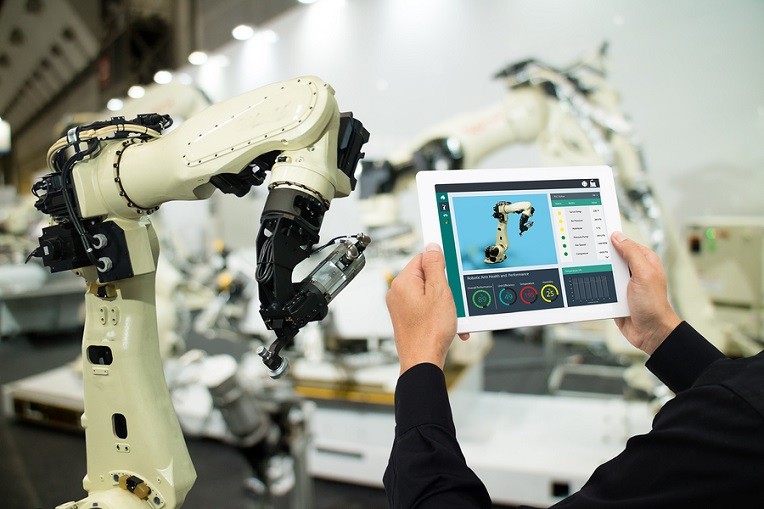Do You Know Your AI From Your Blockchain?
AI, Blockchain, Machine Learning and Deep Learning are just some of the latest buzzwords and tech terms that are now being used on a daily basis. But how many of us actually know what they really mean and how they impact the way we do business?
In this post, Sarah Druce, Project Manager for Sov.Tech’s Developers-as-a-Service unit, explains six of the hottest technologies today and how they will change the way the world functions. Read on!
1. Artificial Intelligence (AI)
AI is probably the most common tech moniker that most of us are aware of. From our smartphone assistants (Siri, Cortana, and Alexa) to self-driving vehicles (very few of us must have experienced these before); AI technology is making its way into our everyday lives in almost every way, and particularly within the business context.
So how does AI work? It’s all to do with data. AI capitalizes on data, something that is ever-growing and constantly generated. The conclusion on a fair amount of research is that machines are far-better suited than humans to consume data, and so the technology focus has gone into making machines ‘smart enough’ to do this. ‘Smart enough’ implies that machines are being built with human capabilities, making them capable of interpreting and acting on real-life physical surroundings. AI teaches machines to perform creative and interpretive functions using nifty computer algorithms.
2. Machine Learning
Machine Learning is considered as an application of AI and is more focused on making systems learn for themselves. Google’s AutoML project has taken this a step further with researchers having managed to teach machine learning software to build machine learning software.
The basic premise of machine learning is that machines and programs don’t need to be taught everything explicitly. Systems can be programmed to behave like humans, where we observe, classify and learn from our mistakes, and learn to use this data independently.

3. Deep Learning
Deep learning takes machine learning to a whole new level with the introduction of neural networks. What this means is that systems and programs are modeled on the human brain’s structure and function. Deep learning imitates the way the human brain works; how it handles stimuli and the way it creates patterns that influence decision-making.
Still a little confused? Simply put, Deep Learning tries to create relationships between stimuli and the responses each one generates from the human brain. Deep learning uses artificial neural networks, which are structured like the human brain and connected to a web. These networks are hierarchical, and this layering means that data is processed in a non-linear approach.
Again, what does this mean? Deep Learning builds on machine learning, using the data from a previous layer with the added data of the added neural network layer to create patterns, extract features and produce results.
4. Blockchain
Blockchain is a public database that acts as a digital ledger to keep track of cryptocurrency transactions. Blockchains were first introduced to support cryptocurrencies (which is what Bitcoin is), but the benefits of Blockchain can be used across many industries.
In a blockchain, all the storage devices that make up the database are decentralized. Within the blockchain, there are ‘blocks’ which is a growing list of ordered records or transactions. The information inside blocks is unchangeable once entered in.
Blocks are time-stamped and linked to other blocks to create a record, available to all members of a particular blockchain network. The full visibility into the entire history of a blockchain means that hacking is almost impossible to achieve, so blockchain technology is an absolute work of wonder for security across countless industries.

5. Business Intelligence (BI)
This is the umbrella term covering all the technologies, data systems, applications and collection practices related to business information. These systems extract key pieces of data and information to ultimately enhance the strategic planning and decision-making processes within businesses.
BI systems can provide a huge amount of data to businesses, including historical, current and predictive data on business performance and industry trends. The BI information extracted contributes immensely to a company’s growth, help it perform better and improve its competitive advantage.
6. Data-as-a-Service
Data-as-a-Service is an instance of moving storage facilities into the cloud to make the end-user experience significantly better. Data-as-a-Service stores data (mostly business data) in the cloud, in a, protected yet accessible space, and makes useful data available to users on-demand, ignoring their location.
For businesses, Data-as-a-Service makes a huge amount of sense, as businesses are becoming more remote, the physical storage of data makes less and less sense. Cloud technology means that data is accessible to the right users, on-demand, in any location.
A great example of how data-as-a-service works are within news and media, with Reuters, Bloomberg, and Thomson Reuters all existing as businesses that supply data to countless broadcasting companies as a part of their service.
Author: Sarah Druce, Project Manager for SovTech’s Developers-as-a-Service unit.
SovTech is a leading custom software development company that creates and designs innovative technologies for small, medium and large enterprises. With an extensive range of software expertise, SovTech offers businesses Enterprise-grade, mobile applications, web platforms, artificial intelligence, machine learning, Blockchain and financial services applications built by elite full-stack hacker developers.






